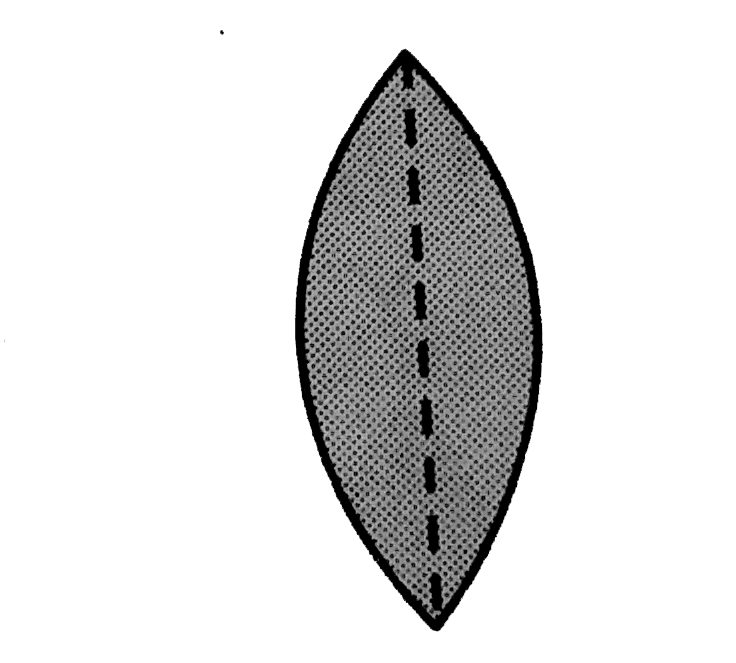If a symmetrical convex lens of focal length 'f is cut into two parts along the principal axis as shown in the figure, the focal length of each part will be:

f
The correct Answer is:C
When is lens is cut into two parts along principal axis, focal length of each part remains unaffected.
Similar Questions
A equiconcave lens of focal length 15 cm is cut into two equal havles along dotted lines as shown in figure. What will be new focal length of each half.

View SolutionA diverging lens of focal length F is cut into two idential parts, each forming a plano concave lens, Fig. What is the focal length of each part ?

View Solution
Knowledge Check
A convex lens has a focal length f. It is cut into two parts along the dotted line as shown in figure. The focal length of each part will be
 Af2BfC32fD2f
Af2BfC32fD2fA convex lens has a focal length f. It is cut into two parts along the dotted line as shown in figure. The focal length of each part will be
 Af2BfC32fD2f
Af2BfC32fD2fIf a equiconvex lens of focal length f is cut into two halves by a plane perpendicular to the principal axis, then
AThe focal length of each half becomesf2BThe focal length of each half becomes 2fCThe focal length of each half remains fDThe focal length of each half becomes f4

If the bio-convex lens is cut as shown in the figure, the new focal length f' is
View SolutionA convex lens has a focal length f. It is cut into two parts along the dotted line as shown in figure. The focal length of each part will be

View SolutionIf the bio-convex lens is cut as shown in the figure, the new foacal length f' is

View SolutionA symmetrical biconvex lens of focal length f is cut into four identical pieces along its principal axis and to the perpendicular to principal axis. The focal length of one of four pieces is
View SolutionAssertion: A boconvex lens of focal length 10cm is split into two equal parts by a plane parallel to its principle axis. The focal length o fthe each part will be 20cm.
Reason: Focal length does not depend on the radii of curvature of two surfaces.
View Solution
